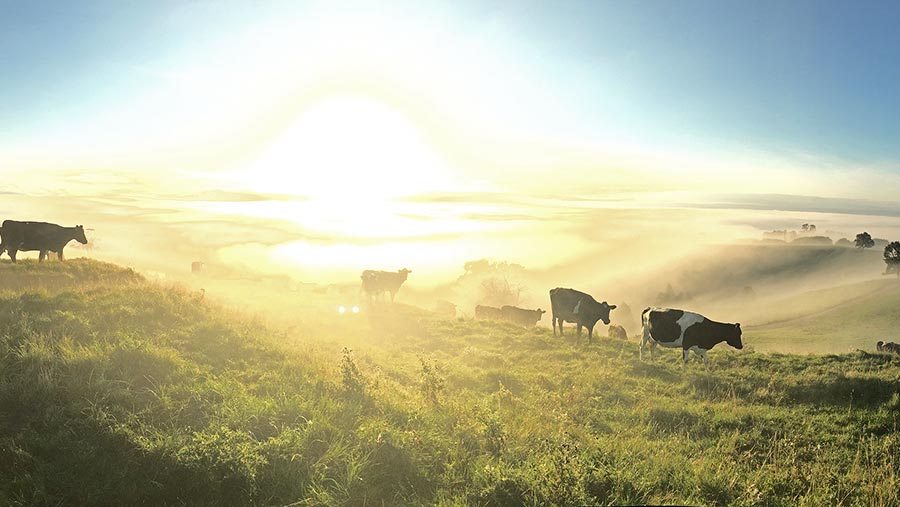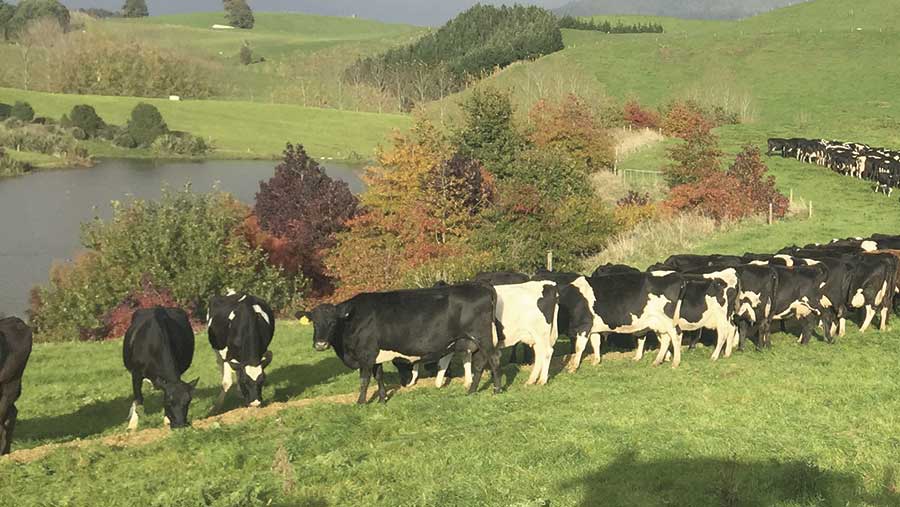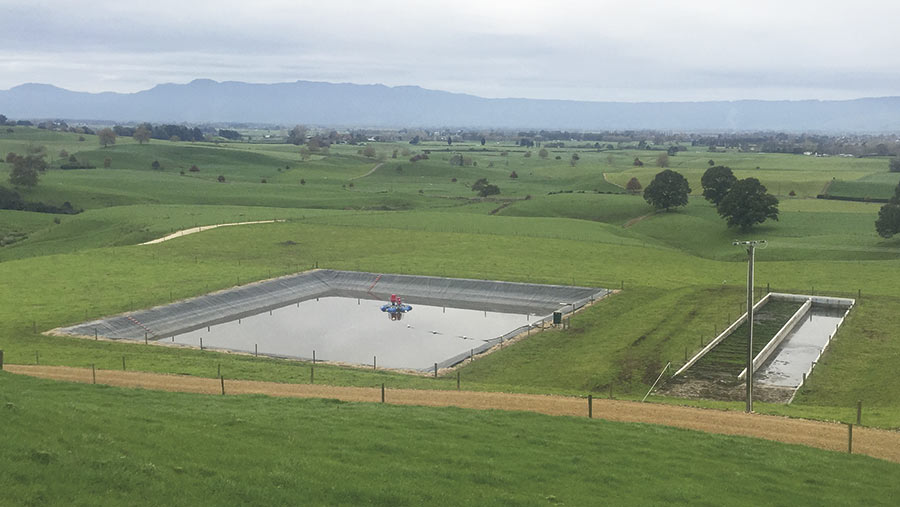How New Zealand dairy farmers are cleaning up their water

Over the past five years, New Zealand dairy farmers have laid more than 26,000km of fencing to stop cattle from accessing waterways as part of an industry-led initiative to improve freshwater quality.
The industry’s recent push to tackle water pollution is part of a national drive to tackle declining water quality, which was identified by the government in its report Freshwater reform 2013 and beyond.
In it, they identified strong increasing trends in freshwater phosphorus and nitrogen levels, particularly in catchments predominantly in pasture. E coli from fecal contamination has also been identified as a risk factor.
See also: Equity partnerships get New Zealand dairy entrants started
The New Zealand government has since set a target to increase the percentage of swimmable rivers, streams and lakes from 72% to 90% by 2040 to safeguard freshwater for tourism, industry and recreation.
Over the years there have been a number of policy documents advising on national reforms across all sectors – not just agriculture.
However, dairy farmers have often taken the brunt of the blame for water quality issues.

Fencing off waterways has been one of the tactics to improve New Zealand’s water quality
As such, the industry has tackled the issue head-on, introducing a number of voluntary codes of practice to improve water quality. The most recent has been The Sustainable Dairying Water Accord, which lays out five key areas for attention (see ‘The Sustainable Dairying Water Accord’, below).
Fencing off waterways from cattle has been one of the main action points nationally, with different strategies at regional level, depending on challenges in that area.
Tiroroa Farms, Matamata
Some regions have limited grants, such as reductions in the cost of buying trees, however, with no subsidies, the work has largely been self-financed by farmers.
One such farmer is Tracy Brown of Tiroroa Farms, Matamata on the North Island, who runs 700 cows, producing 260,000kg/year of milk solids.
Environmental management and sustainability have always been high on the agenda for Mrs Brown and her husband Wynn, whose farm name means “view to the future”.
Over the past 20 years they have taken steps to curb a decline in water quality by using techniques now being adopted as part of the accord.
All of the farm’s 13 wetland areas and 12-14km of waterways have now been fenced off. About 20ha of trees have also been planted on sidling (unproductive) areas around rivers and streams.
This includes 20 different species of oak and fruiting feijoa trees, liquid ambers and poplars.
Mrs Brown says: “We’ve always been interested in the environment. We love the sea, streams and rivers. It seemed the right, logical thing to do.”
Reducing nitrates
The farm – which has an effective area of 320ha – is in the Waitoa Catchment. Sedimentation has been identified as one of the main issues in the region.
As such, keeping stock away from water edges is viewed as a key management tool to reduce problems.
Mrs Brown says different regions will have different targets in terms of farm nitrate or phosphate use. For example on the Waikato river there are proposals to reduce nitrates.
“It depends on the region you’re in as to the nitrate targets. But if you’re in the 75th percentile (for nitrate use), you’ve got to get below that.
“Eighty-three percent of dairy farmers have now got nutrient budget information, which means they can improve efficiencies – that’s been part of the accord”,” Mrs Brown explains.
She believes one of the biggest changes as a result of the accord has been a shift in attitude, with more farmers now recognising waste as a valuable resource.
Improved knowledge transfer means there has since been a reduction in non-compliance for effluent management (see ‘Steps to improve water quality by Kiwi dairy industry’, below).
This is an area where farmers have always faced fines for breaches, with penalties varying from NZ$3,000 (£1,625) to $300,000 (£162,524).

Tiroroa Farms have installed an effluent system
Saving money on fertiliser
The Browns themselves recognise the value of slurry on farm. In 2014 they invested $250,000 (£135,417) in an effluent system with dual drying beds, a lined pond and low-intensity application system.
The separated solids are now applied to maize ground, which has eliminated fertiliser use on this land, bringing a saving of about $6,000/year (£3,250/year).
The dirty water is then spread to pasture, which is saving another $15,000-$20,000/year (£8,126 -£10,833/year) from reduced fertiliser use, says Mr Brown.
“The low-intensity application system means there’s a bigger window to spread and less risk of pooling,” he says.The system also automatically turns off and send a text alert should a problem occur.
Despite poor milk price, Mrs Brown says the voluntary accord has largely been well received by dairy farmers. “I think they’ve generally embraced it.
“We’ve had three to four years of really low payout and a lot of farmers going backwards, so to find money to do it has been challenging. It could have halted, but we’ve still made real progress, despite challenging times.
“Where there have been challenges, people have trimmed back across all areas rather than slashing one area. Care for the environment is one of our highest priorities as dairy farmers.”
The Sustainable Dairying Water Accord
The Sustainable Dairying Water Accord was developed by the dairy industry in 2013 to replace The Dairy and Clean Streams Accord (2003-2012). It provides a voluntary framework for the industry to improve water quality.
The accord has been developed under the guidance of The Dairy Environment Leadership Group, which includes various industry bodies.
Monitoring and recording is carried out by some milk buyers and DairyNZ (the Kiwi levy board). An annual auditing process is carried out by Telarc to monitor progress.
The accord highlights five areas for attention:
- Riparian management (wetland areas adjacent to rivers or streams)
- Dairy farmers will exclude dairy cattle from significant waterways and wetlands
- Riparian plantings will occur where it would provide a water quality benefit
- The crossing of waterways by dairy cows will not result in degradation of waterways.
- Nutrient management
- Dairy farmers will manage nitrate and phosphate losses and acknowledge the need to manage within nitrate-loss limits and pursue continuous improvements in nutrient use efficiencies.
- Effluent management
- Dairy farmers will comply with regional effluent management rules.
- Effluent systems will be fit for purpose and achieve 365-day compliance.
- Water use management
- Dairy sheds will use no more water for wash down and milk cooling than is necessary.
- Irrigation systems designed to minimise the amount of water needed to meet production objectives.
- Conversions
- All new dairy farms to be established and operated using good practice to avoid water quality issues.
Steps to improve water quality by Kiwi dairy industry
- 97.2% of waterways now excluded to cattle
- 26,197km of fencing laid to prevent cattle accessing waterways
- 99.4% of 44,386 regular crossing points on dairy farms now have bridges and culverts
- NZ$750m spent on farm effluent management systems
- 83% of farmers have nutrient management budget (100% target)
- 5% non-compliance for dairy effluent – the lowest on record
- 47% of farmers have water meters installed.
